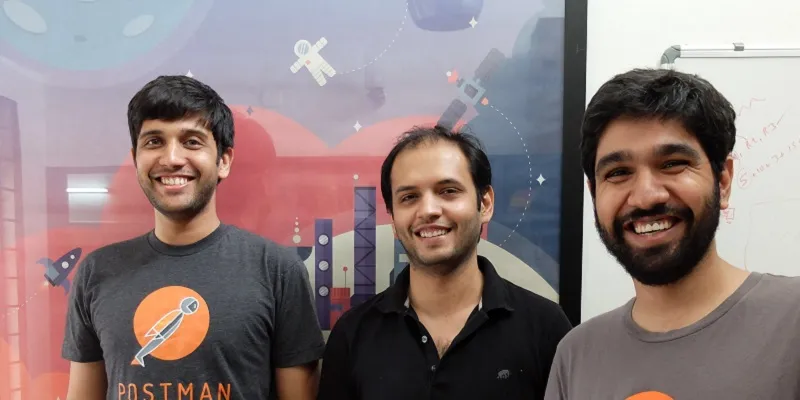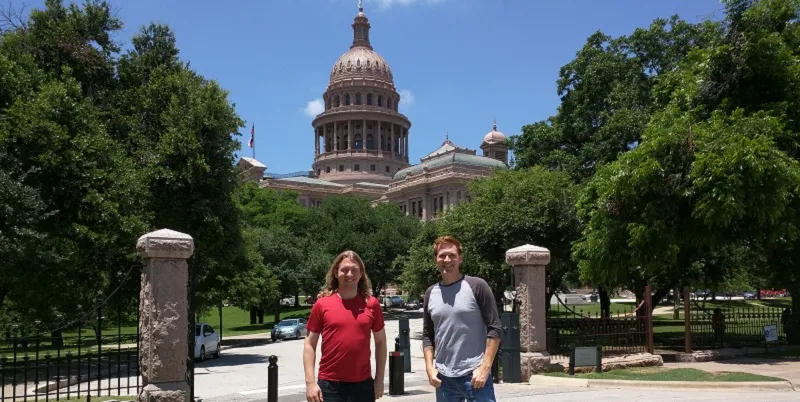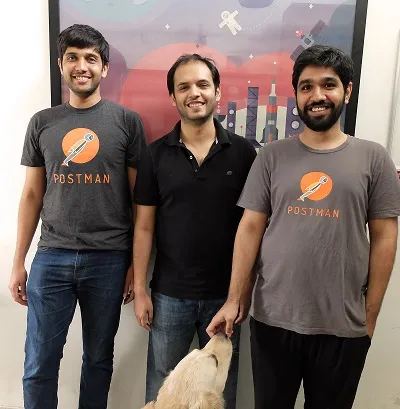How Postman went from a hobby on the Chrome webstore to a platform of 3 million users
The developer space is very different from a traditional enterprise space. Postman essentially exists as a platform that developers can download. The platform helps developers build, test, document, and share their APIs at a faster pace.
Launched in November last year, Postman today has over three million developers using their platform, has offices in Bengaluru and Austin. Started by Abhinav Asthana, Postman is Abhinav’s second startup. In 2010, Abhinav had co-founded TeliportMe, and before that he was working at Yahoo as an intern.
During his time at Yahoo, Abhinav met Ankit Sobti, the Co-founder and CTO of Postman. The duo was building a front-end architecture of an app and that’s when they came in touch with API. “At that time testing APIs was a pain. There were a lot of communication issues with different teams. We thought of making the problem simpler, but being first-time engineers we didn’t work on the problem then,” says Abhinav.

Building something on the side
Soon, Abhinav went ahead to build TeliportMe, where again he was building APIs and found that the problems existed across the board. Ankit went to ISB and after that went to Mumbai for work. It was during his spare time at TeliportMe, Abhinav created the prototype of the first Postman app. At that time, he had built the product primarily for himself, and finding that it worked well, Abhinav decided to put it up on the Chrome webstore as an open-source REST client.
“Most of the developer or hacker tools come up when you solve a problem for yourself and you share it with the community and the community in turn adopts it,” says Abhinav. With time, the team started to see organic growth and traction, and soon people started giving their feedback asking for feature improvements. In 2012, on the Chrome webstore, there were close to 2000 downloads. It was a side project and people were still using it.

Taking from second nature
For Abhinav, building and designing was second nature. “I grew up in UP in a place where internet and technology were very elusive. While I was in school, I would do web design projects from my school. It was this inclination towards design and programming that took me to product design. Building products was something I really loved,” says Abhinav.
By 2013, Abhinav moved out of TeliportMe and took on a few consulting assignments on the side. During the whole time, both Abhinav and Ankit were in touch with each other. After moving out of TeliportMe, Abinav discussed what he was doing with Postman to Ankit and the duo worked on it again on a part time basis.
Abhinav was, however, cautious the second time around,
After my first startup and different product experiences I was a little jaded. I was very cautious. I had realised after my first startup that there can be vision differences between co-founders. I had exhausted all my resources and for me the most important thing was finding co-founders who can believe in your idea and work with you.

Also read: This entrepreneur ‘accidentally’ built Gluster, which was acquired by RedHat for $136 million
Second time lucky
Abhinav would commute between Benglauru and Mumbai, where Ankit was. It was during this time that Abhinav re-connected with Abhijit Kane, who had worked as an intern at TeliportMe. Abhijit was working at Walmart Labs. “Till most of this time, we were having fun hacking something and contributing to open-source. Abhijit figured that several people at Walmart were using Postman,” adds Abhinav. This is when the trio actually worked on Postman as a startup, last year.
Today, Postman claims to have 1.6 million monthly-active users, but the ride wasn’t easy for Abhinav.
They began looking at the space more closely and figured that people need flow an API workflow from the point of conceptualisation to publication of documentation and spreading the word of the API. Through this entire process, the team found that there are different activities that developers do. A chunk would test the API, another set would be backend developers and others frontend developers.

Building on collaboration

“We realised that while people were coming to Postman and doing these activities, their workflow wasn’t smooth. And they would face problems along the whole process of development to testing to monitoring. We validated that there was a communication problem among developers in doing all of these things. We thought of improving the product with this idea in mind,” says Abhinav.In the initial years, when Abhinav built Postman the money would come in as sponsors with $200 per month, it was bootstrapping in a different way. The initial plan was to sustain themselves and never stop work on the product.
It was during this time Google Chrome Developers approached him. They were using the Postman app and were building a packaged app platform. Soon the new version of Postman went out as a featured app in the Chrome Webstore. The duo saw that the organic growth of the app simply kept increasing and compounding.
Speaking of the Google experience, Abhinav says, “I had a call with one of the engineers in the Bay Area and I was surprised to hear that the developers there were using Postman for 20 percent of their development time. At that time, there were a few 100,000 active users. So I started building a new version of the app for them.”
Soon the website was built and the minute they hit 500,000 users, they put out notifications. Started with jetpacks and in-app purchases, the team started working on a model. They saw that collaboration was an issue, and realised that they had to build a new type of collaboration platform. This was worked along a per month subscription basis.
Funding and market
Last year October end, Postman bagged a funding of $1 million from Nexus Venture Partners. The funding helped the team in building a stronger collaboration platform. Initially, Postman just helped with testing of the APIs.
Now with Postman Collections, developers can construct better. When people began sharing the Postman Collections, that’s where collaboration, syncing and other features came in.
Some of the products that are similar to Postman are Runscope, Paw, StopLight, RESTClient, SmartBear, and RAML. A report by Gartner suggests that by 2017, close to 268 billion downloads of mobile apps are likely to generate a cumulative revenue of $77 billion. The report also stated that open-source frameworks, app markets, and mobile DevOps will increase exponentially. This year, API testing is one of the top-most requirements by enterprises.
Speaking of their investment in Postman, Jishnu Bhattacharjee, Managing Director, Nexus Partners, says,
The thing about Postman was that it was a small team working on a product that had a global impact. They had a high bar, which automatically made them frugal and tight-knit. Building is not an expensive affair in today’s world. The goal is that every developer needs to use Postman, and it should become a core component of the enterprise software solution stack.
The team is now looking to strengthen the product, focus on the US operations and hire across the board.







![[YS Exclusive] RevX Capital launches second fund; aims for Rs 750 Cr corpus](https://images.yourstory.com/cs/2/a1c35720cce711efabacb7b767fb7698/CopyofCopyofNewPPTTemplates-1736763309419.png?mode=crop&crop=faces&ar=1%3A1&format=auto&w=1920&q=75)